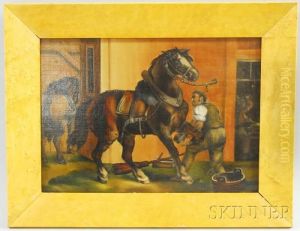Henry Willard Paintings
Henry Willard was an American artist primarily known for his landscape paintings. Born on June 25, 1834, in Washington, D.C., Willard displayed a keen interest in art from an early age. He pursued his passion by studying under renowned artists of his time. His work was influenced by the Hudson River School, a mid-19th century American art movement embodied by a group of landscape painters who were inspired by romanticism.
Willard's paintings often captured the majesty of the American wilderness, depicting scenes of the expansive landscapes with a detailed and realistic approach. He was particularly skilled in the use of light and shadow, which brought a sense of drama and emotion to his landscapes. His works were part of a larger cultural movement that sought to find a unique visual language that was distinctly American, separate from European traditions.
Despite the recognition of his talent, Henry Willard did not gain the same level of fame as some of his contemporaries like Thomas Cole or Frederic Edwin Church. Nevertheless, his contributions to American landscape painting were appreciated by art aficionados who recognized the beauty and technical skill of his paintings. Willard's works have been displayed in various art galleries and hold a place in the collections of those who appreciate the Hudson River School style.
Willard lived through the Civil War and the transformative years that followed, a period that saw rapid changes in American society and in the art world. He witnessed the shift from romanticism to realism and the beginnings of modernism. Despite the changing art scene, Willard remained true to his style throughout his career. He passed away on January 25, 1909, leaving behind a legacy that would inspire future generations of landscape artists.


